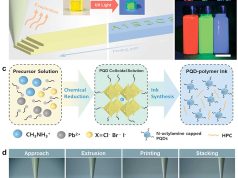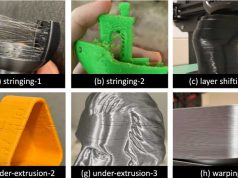Researchers from the Universidad Carlos III de Madrid (UC3M) and the IMDEA Materials Institute have developed a pioneering experimental technique for fragmentation testing. This method aims to evaluate the energy absorption capacity of metallic structures produced by 3D printing during impact events. This technique is characterized by its flexibility, simplicity and speed, outperforming conventional methods.
The main areas of application for this research are in aerospace, security and construction. In these sectors, the development of new materials for lightweight, portable protective structures that can be repaired on site and have a high energy absorption capacity on impact is essential.
An example of the application of this technology would be the protection of airplanes in the event of bird strikes or safety in the event of vehicle collisions and explosions in sensitive areas such as government buildings or nuclear power plants.
“The idea is to be able to manufacture protective structures with 3D printing to reduce their cost, minimise waste, personalise their design and offshore their manufacturing, given that it could be carried out in-situ, which would be a great advantage especially for aerospace and defence applications,” explains Juan Carlos Nieto Fuentes, Marie Curie CONEX-Plus researcher (GA 801538) from UC3M’s Department of Continuum Mechanics and Structural Analysis, who recently published this work in the Journal of the Mechanics and Physics of Solids.
The new technique was developed at the UC3M Impact Laboratory, where fragmentation tests are conducted at impact speeds of up to 400 meters per second.
“The article presents a new experimental technique launched at the UC3M Impact Laboratory, where we carry out fragmentation tests at impact speeds of up to 400 metres per second,” explains another of the authors, José Antonio Rodríguez Martínez, a Senior Lecturer in the same UC3M department who has developed this research within the framework of PURPOSE, a European Union ERC Starting Grant (GA 758056) project.
The experiments were carried out using a helium-powered gas cannon that fired a cone-shaped projectile weighing around 150 grams at speeds of between 200 and 400 meters per second. The resulting radial expansion and fragmentation of the tube samples demonstrated the effectiveness of the method.
“Specifically, we have determined the distribution in shape and size of the pores resulting from the printing process and we have investigated their effect on the formation and propagation of cracks, and thus on the energy absorption capacity of the structure,” says Federico Sket, senior scientist at IMDEA Materials, who has participated in this study from this research institute together with his colleague Jonathan Espinoza, research assistant at the institute.
“The technique is simpler, faster to use, flexible and has a lower operating cost than systems that use explosives or electromagnetic systems. Our device also allows us to carry out more experiments in less time and thus obtain a number of tests that provide statistically significant results,” explain Sergio Puerta and David Pedroche, laboratory technicians from UC3M’s Department of Continuum Mechanics and Structural Analysis, who were involved in carrying out the experiments.
“This technique will ultimately tell us whether metal 3D printing is a viable technique for building protective structures,” says José Antonio Rodríguez Martínez.
This research lays the foundation for a protocol to systematically determine the energy absorption capability of printed structures and could ultimately reveal whether 3D printing of metals is viable for the construction of protective structures. José Antonio Rodríguez Martínez highlights the importance of funding programs in the US through the Department of Defense and Department of Energy and calls for a similar long-term vision from the European Union and the Spanish government.
“In the US there are already specific programmes promoted by the Department of Defence and the Department of Energy to fund this line of research, so we hope that the European Union and the Government of Spain will also develop a long-term vision that will allow us to bring the fundamental research we are carrying out into engineering practice,” he concludes.
Subscribe to our Newsletter
3DPresso is a weekly newsletter that links to the most exciting global stories from the 3D printing and additive manufacturing industry.
























